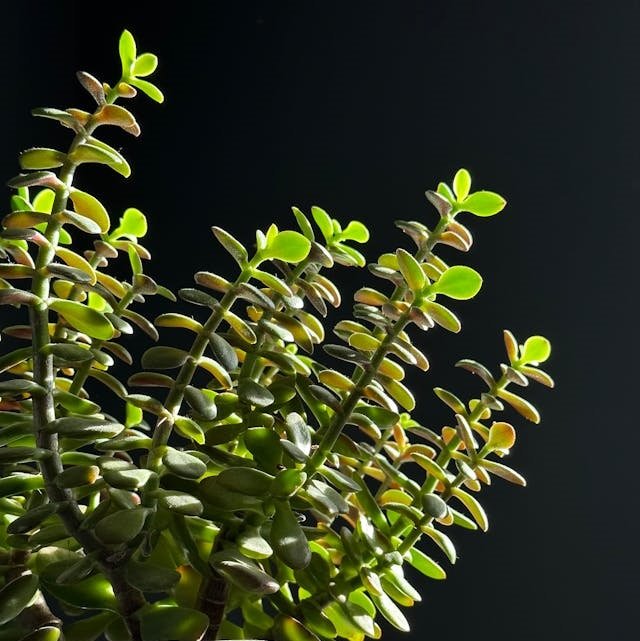
1. Introduction
Want a houseplant that brings good luck and cleans your air? The jade plant (Crassula ovata) delivers both! This hardy succulent is famous for its plump green leaves and easy care routine.
Did you know the jade plant benefits go beyond looks? The Jade plant is a natural air purifier believed to attract wealth. Following jade plant Vastu principles can maximize its luck-bringing potential.
But are there jade plant disadvantages? Unfortunately, yes. It’s mildly toxic to pets and sensitive to overwatering. Smart placement is key to avoiding problems.
Why do millions love this plant? It survives busy schedules while adding greenery. Its Feng Shui benefits make it popular in homes and offices alike.
In this complete guide, we’ll reveal:
• 15 surprising health and wellness benefits
• 5 potential risks to watch for
• 5 expert care tips for thriving plants
• Varieties of jade plant
• Ideal placement for Vastu and Feng Shui advantages
• The Cultural Significance of Jade Plant
Whether you want cleaner air, good fortune, or a pretty plant – we’ve got you covered. Keep reading to discover if this popular succulent belongs in your home!
What Is a Jade Plant (Crassula ovata)?

Ever wondered why this succulent is called the “money plant”? The jade plant (Crassula ovata) is a superstar in the succulent world. Its thick, oval leaves store water, making it drought-resistant.
Native to South Africa, it’s now a global favorite. Offices and homes love it for its low-maintenance charm. Many cultures link it to prosperity and longevity.
In Chinese Feng Shui, it’s called the “money tree”. Jade plant Vastu recommends keeping it near entrances for wealth. These crassula plant benefits make it more than decor.
Other popular names include:
· Lucky plant (for good fortune)
· Friendship tree (often gifted)
· Dollar plant (in some regions)
3. Jade Plant Benefits:
15 Reasons to Grow This Lucky Succulent
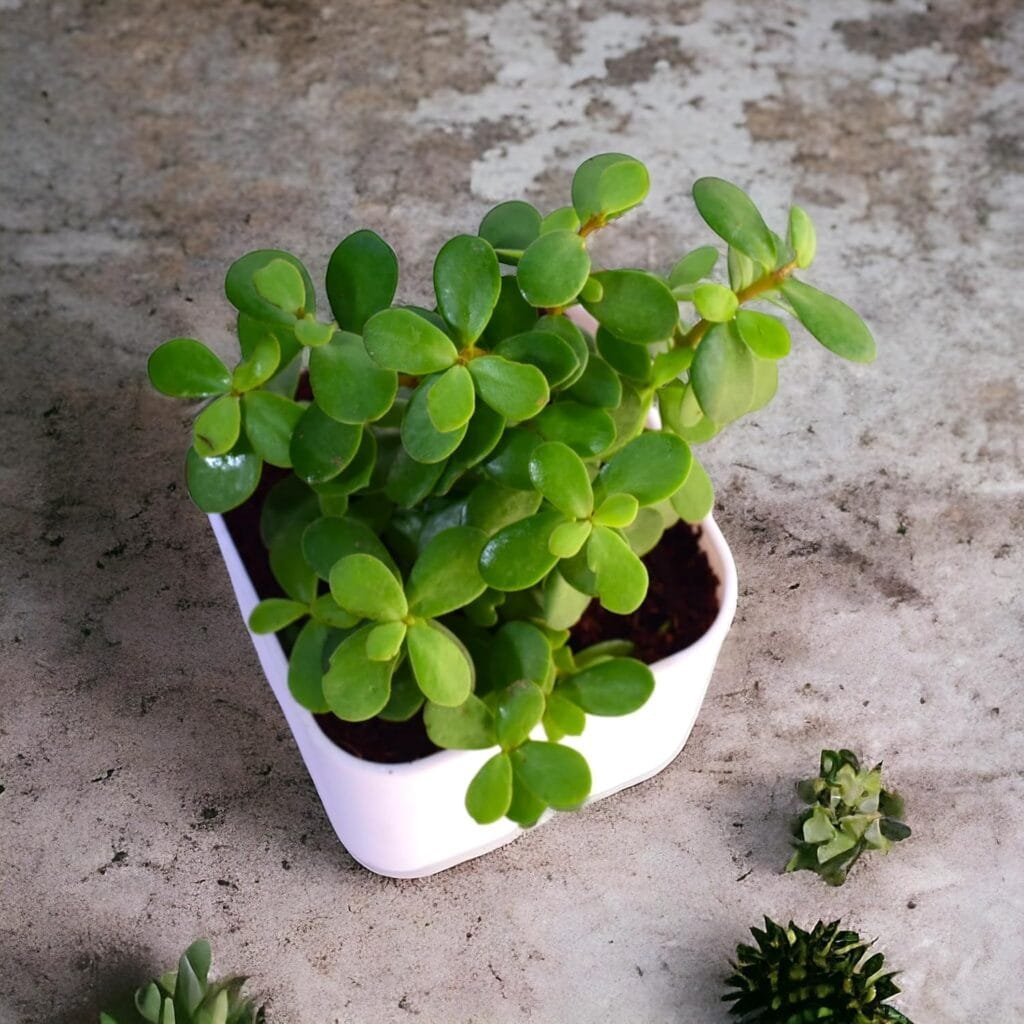
1. Natural Air Purification
Want cleaner indoor air without expensive filters? Some of the key Jade Plant Benefits are – ability to remove harmful toxins like benzene and formaldehyde from the air. NASA research highlights its air-purifying qualities.
Place 3-4 plants in your living room for best results. Their crassula plant benefits make them perfect for urban homes. Breathe easier with this green ally!
2. Attracts Wealth (Feng Shui Power)
Did you know placement affects its luck-bringing power? Jade plant Vastu benefits recommend southeast placement for wealth. In Feng Shui, its round leaves symbolize prosperity.
For maximum jade plant Vastu benefits, keep it near your office desk. Avoid bedrooms—it’s too energizing for sleep spaces. Money vibes incoming!
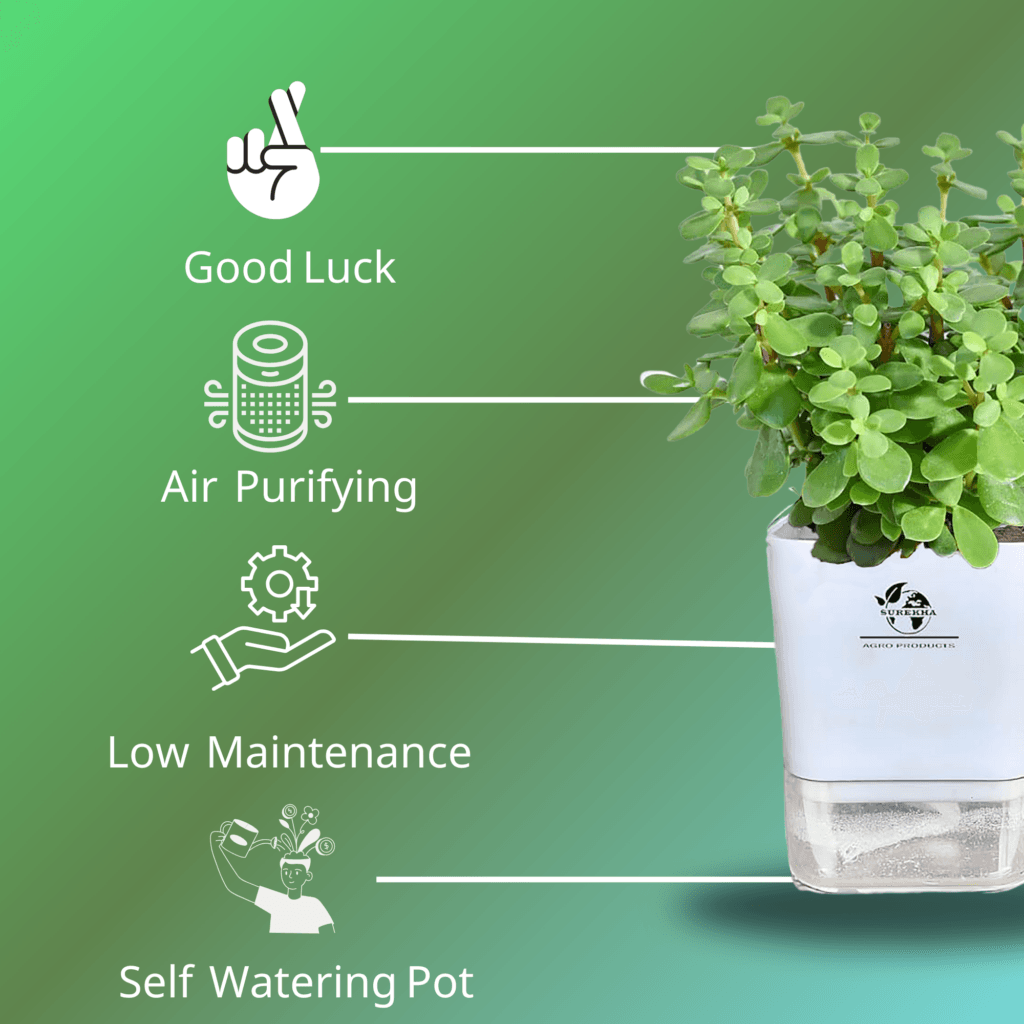
3. Boosts Humidity
Struggling with dry air? These succulents release moisture naturally. One of the many benefits of the crassula plant includes relieving dry skin and sore throats.
Great for winter months when heaters parch the air. Pair it with other humidity-loving plants for a mini oasis. Your sinuses will thank you!
4. Reduces Stress & Anxiety
Feeling overwhelmed? Recent studies show caring for plants lowers cortisol levels. The jade plant’s calming green hue soothes nerves effortlessly.
Try placing one on your work desk. Even glancing at it for 30 seconds helps reset your mind. Nature’s therapy at its finest! This is one of the best Jade Plant Benefits.
5. Thrives on Neglect
Forgetful about plant care? This resilient succulent survives occasional neglect. Underwatering beats overwatering—perfect for busy lifestyles.
The crassula plant benefits include adapting to low light. Just give it bright, indirect sunlight when possible. Ideal for first-time plant parents!
6. Stunning Home Decor
Need a statement piece that’s alive? Its glossy leaves and tree-like shape add elegance. Works in modern and boho spaces alike.
Pro tip: Use a decorative pot to elevate its look. Instagram-worthy and effortless—what’s not to love?
7. Oxygen Production
Craving fresher air? Like other succulents, it emits oxygen at night. This jade plant benefit supports better sleep and clearer thinking.
Pop one in your home office or bedroom. Pair with aloe vera for an oxygen boost. Wake up feeling refreshed! This is they key Jade Plant Benefits.

8. Teaches Responsibility
Want to teach kids about nature? Its easy care makes it a great learning tool. Watch their pride as it thrives under their care.
Fun project: You can propagate a new plant together from a single leaf. It is educational and rewarding for all ages!
9. Traditional Skin Remedies
Surprise! Some cultures use its sap topically for minor skin issues. Jade plant benefits for skin include soothing warts or minor cuts (with caution).
⚠️ Never ingest—it’s toxic when eaten. Always patch-test and consult a doctor first. Nature’s first-aid kit!
10. Space-Saving Size
Short on space? Its compact growth fits tiny apartments. Desktop, shelf, or windowsill—it adapts anywhere.
Slow growth means less repotting, making it a perfect choice for urban jungles with limited square footage. Small but mighty! One of the Jade Plant Benefits is its compact size.
11. Enhances Productivity
Need a focus boost? Recent research claims that few office plants can boost Productivity by 15%. The crassula plant benefits include reducing mental fatigue.
Place one near your computer. Green surroundings = fewer distractions and more creativity. Work smarter, not harder!
12. Lives for Decades
Want a long-term green companion? With proper care, jade plants outlive most pets—some reach 50 years!
Prune occasionally to maintain shape. Pass it down as a living heirloom. Talk about sustainable decor!
13. Hypoallergenic Qualities
Sick of sneezing? Unlike flowering plants, it doesn’t release pollen—a safe choice for allergy sufferers.
Rarely attracts pests like spider mites. Just wipe leaves monthly to keep them dust-free. Breathe easy, literally!
14. Easy to Propagate
Dreaming of free plants? Snip a stem or leaf, and it’ll root in weeks. Share clones with friends as gifts.
Water propagation is foolproof for beginners. Multiply your collection without spending a dime. Green thumbs unite!
15. Meaningful Gift
Need a thoughtful present? It symbolizes friendship, peace, and prosperity. Ideal for weddings, housewarmings, or graduations.
Complement the jade plant with a handwritten note explaining its Vastu benefits. A gift that grows in value—literally! Gifting a jade plant is a thoughtful gesture and one of the best jade plant benefits.
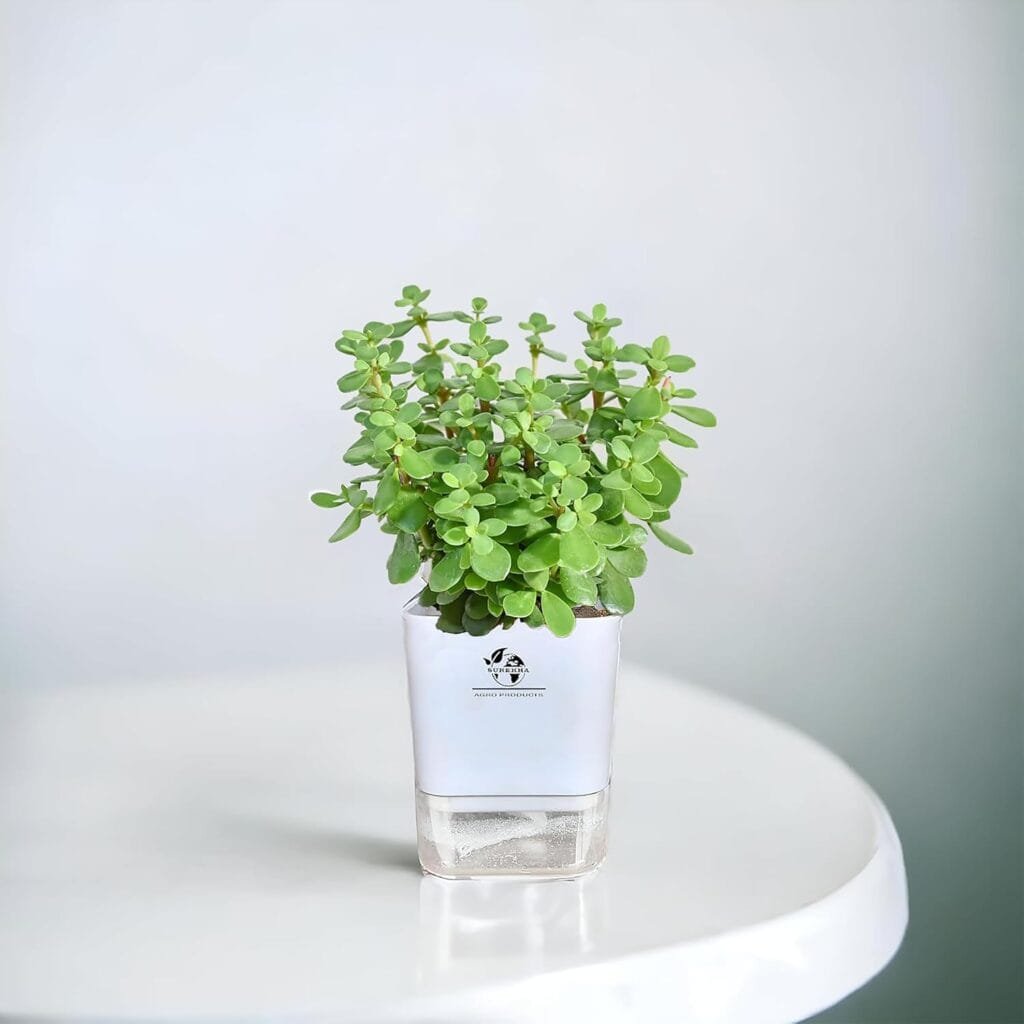
⚠️ 4. Jade Plant Side Effects: 5 Important Risks to Know
While jade plant benefits are impressive, smart owners understand these risks too. Don’t skip this safety checklist!
1. Toxic to Pets 🐾
Danger for cats/dogs: Its sap contains mild toxins. Symptoms include vomiting or lethargy if ingested.
Keep it on high shelves if you have curious pets. The crassula plant benefits aren’t worth emergency vet visits!
2. Skin Irritation Alert
Handling cuttings? The sticky sap may cause rashes on sensitive skin. Always wash your hands after pruning.
Ironically, fresh sap does the opposite, while jade plant benefits for the skin exist in folk medicine. Handle with care!
3. NOT for Human Consumption
Some cultures use it topically but never eat it. It can cause nausea, dizziness, or worse if swallowed.
Stick to enjoying its jade plant Vastu benefits instead. When in doubt, choose safer herbal remedies.
4. Root Rot Killer 💀
Do you love watering plants? Stop! Overwatering causes mushy roots and mold—the #1 killer of jade plants.
Let the soil dry completely between waterings. Remember: These crassula plant benefits thrive on neglect!
5. Pest Magnet When Unhealthy
Weak plants attract mealybugs and spider mites. Watch for white webs or sticky leaves.
Ready to learn how to care for this versatile succulent? Let’s explore its amazing
Pro Tips for a Thriving Jade Plant (Crassula ovata)
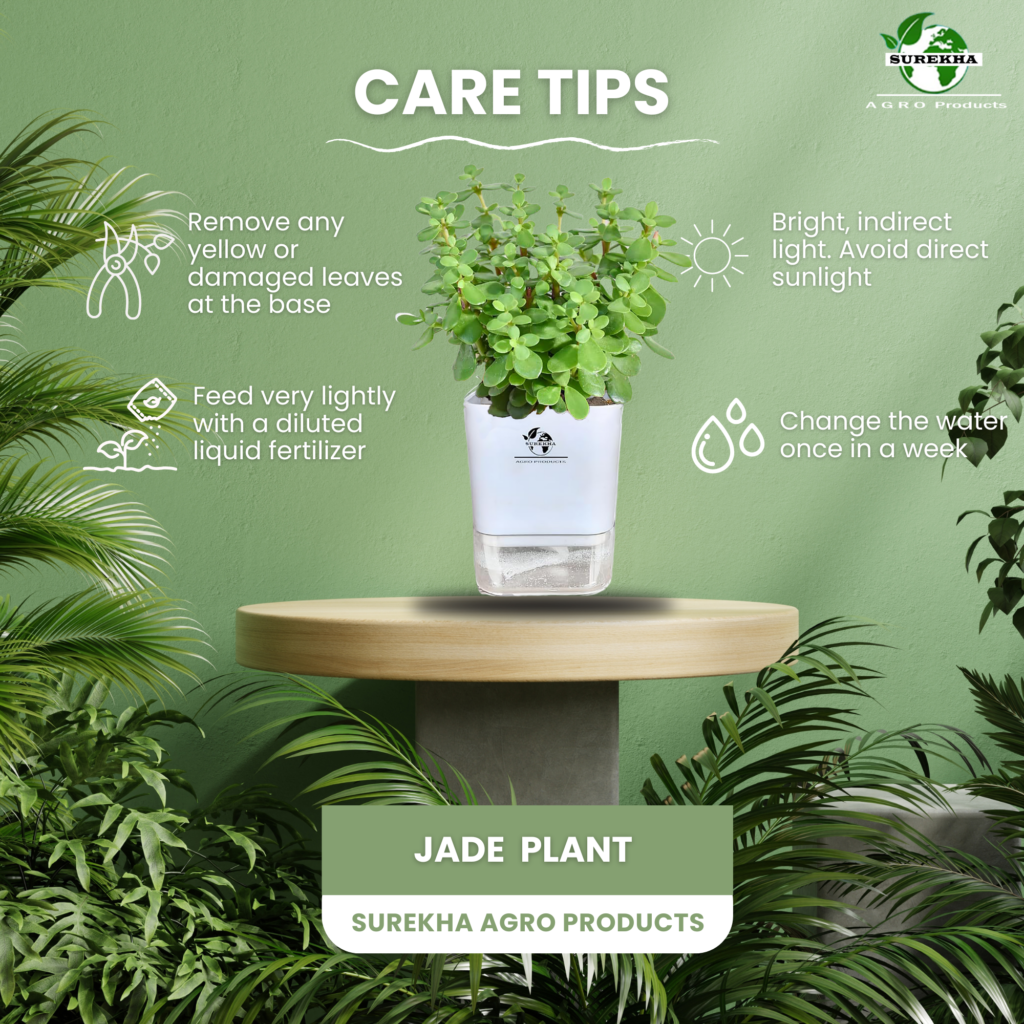
🌞 Perfect Placement for Maximum Benefits
You can boost jade plant benefits with 5+ hours of bright, indirect light. Gentle morning sunlight is best enjoyed through east-facing windows.
Always maintain 60-75°F (15.5-24°C) – the sweet spot for crassula plant benefits. Avoid cold drafts near AC units or windows.
💧 Watering Like a Pro
Water only when soil is bone-dry (every 2-3 weeks). Overwatering kills more jades than neglect!
Soak-and-dry method works best:
- Water deeply when soil is completely dry
- Drain excess water (no wet feet!)
- Reduce watering in winter
Overwatering? Leaves will turn yellow and drop. Underwatered? Wrinkled leaves signal thirst.
✂️ Safe Propagation for More Plants
Multiply your jade plant Vastu benefits easily:
- Twist off healthy leaves
- Let dry for 2 days
- Place on dry soil
New roots emerge in 3-4 weeks – no water needed until then!
🐾 Pet-Safe Placement Tips
While enjoying jade plant benefits for skin (topical use only), keep plants 3+ feet high if you have cats/dogs.
Pet-safe alternative: Swap jade for Haworthia (similar look, non-toxic).
🐛 Pest Control Made Easy
Prevent bugs naturally:
· Wipe leaves monthly with a damp cloth
· Spray neem oil at the first sign of mealybugs.
Varieties of Jade Plants: Discover the Stunning Types
The classic Crassula ovata is just the beginning! Jade plants come in diverse varieties, each with unique charm:
- Crassula ovata ‘Hummel’s Sunset’ – Golden-yellow leaves with red edges, perfect for bright spaces.
- Crassula ovata ‘Gollum’ – Trumpet, tubular, -shaped leaves (inspired by Lord of the Rings).
- Crassula ovata ‘Tricolor’ – Variegated green, white, and pink foliage for a colorful touch.
- Crassula arborescens (Silver Dollar Jade) – Blue-gray leaves with red margins, a rare beauty.
- Crassula ovata ‘Mini Jade’ – Compact growth, ideal for small spaces or bonsai.
Whether you love traditional green jade or unique mutations, there’s a variety to match every style. Which one will you grow? 🌿
Ideal Placement for Vastu & Feng Shui Benefits
To maximize the wealth-attracting power of your jade plant, strategic placement is key:
- Feng Shui: Place near the southeast corner (wealth area) or east (health & family). Avoid bedrooms—its energy is too active for sleep.
- Vastu: The north or east direction attracts prosperity. Keep it by entryways to welcome abundance.
- Office/Workspace: Position on your desk’s left side (for career growth) or near cash registers (for business luck).
Vastu and Feng Shui appeal are among the most attractive Jade plant benefits.
Use a red pot or ribbon to enhance its money-drawing energy. Ensure it gets bright, indirect light—healthy plants amplify positive vibes!
Where will you place your lucky jade? 🌿💰 Let us know in comment
Final Thoughts: Is a Jade Plant Right for You?
The benefits of jade plants are undeniable – from air purification to feng shui prosperity. Yet, remember its pet toxicity and watering needs. Proper care ensures the rewards exceed the risks.
Why do millions love it?
✅ Crassula plant benefits thrive on neglect
✅ Jade plant Vastu benefits may boost positivity
✅ Long lifespan makes it a living heirloom
Place it wisely, water sparingly, and keep pets safe. Then enjoy its beauty and potential jade plant benefits for skin (topical use only!).
Your turn! Do you own a jade plant? Share your stories or questions below. Let’s grow our plant knowledge together!
Pro tip: Bookmark this guide to revisit its care tips and crassula plant benefits anytime. Happy planting! 🌿
FAQs
- Is the jade plant auspicious?
Yes! According to Feng Shui and Vastu, its round leaves symbolize wealth. Place it near entrances or workspaces to attract prosperity. Many swear by its jade plant Vastu benefits for good energy.
- Can I keep a jade plant if I have pets?
Caution needed! While offering crassula plant benefits, it’s toxic to cats/dogs if eaten. Opt for high shelves or hanging planters. Consider pet-safe alternatives like Haworthia.
- How frequently should I water my jade plant?
Rarely! Water only when topsoil is completely dry (every 2-3 weeks). Overwatering causes root rot—the #1 killer. Wrinkled leaves? Time for a drink!
- Can jade plants purify air?
Absolutely! NASA studies confirm its air-cleaning jade plant benefits. It removes toxins like benzene and formaldehyde. Pair with snake plants for maximum purification.
- Why are my jade plant’s leaves falling off?
Two likely culprits:
Overwatering (yellow, mushy leaves)
Underwatering (dry, shriveled leaves)
Adjust your care routine and check light exposure.

I started loving this wonder plant without reasons, but now it’s a real “friend” in my yard and my mini nursery. I have 6 types so far and wish to have all varieties. Thanks to coming across this article, ❤️👍
In some part of S.A we do consume it….it helps in diabetic.